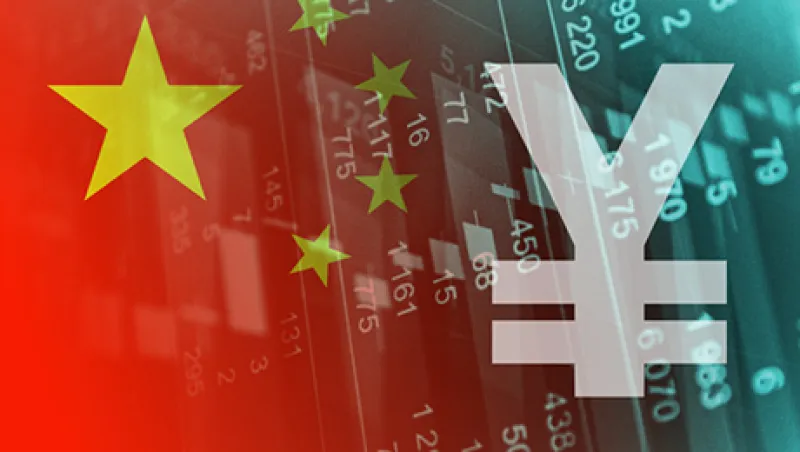Believers in American exceptionalism in technology have to be taken aback by the findings of Boston Consulting Group this year: The U.S. is losing its edge in research and development to China.
The $7.1 trillion of R&D spending in the U.S. from 1995 to 2015 was two-and-a-half times what China spent. Yet by the end of this period, China was investing more on what the Boston Consulting Group calls “the back end of the R&D chain,” or that which turns new knowledge from research into commercial products and new manufacturing processes.
China is also cutting into the U.S.’s historic advantage in basic and applied research, the source of “breakthroughs in physics and material sciences,” including the digital technologies that have revolutionized just about every industry, according to an April report from the consulting firm. Armed with the financing and innovation prowess needed to challenge world leadership in artificial intelligence, robotics, and supercomputing, China’s tech sector is ready to make a run at just about any opportunity it chooses.
The country is quickly moving to the forefront of financial technology in mobile payments, online lending, and crowdfunding. Some of these enterprises have grown so big in China that they are making waves globally. A prominent case in point is Ant Financial Services Group, a unit of Alibaba Group. Ant Financial, whose Alipay service has about 450 million active users, agreed in April to buy Dallas-based money transfer company MoneyGram in a deal valued at $1.2 billion.
Outside Asia, the rise of China’s fintech sector has been overlooked because of how fast it has developed while being propelled by business on the mainland.
In 2014, only one Chinese company, credit assessment provider Wecash, made the top 50 of the KPMG Fintech 100, a global ranking of fintech firms based on such factors as market traction and their pace and size of capital raising. Last year, eight of the top 50 firms were Chinese, with Ant Financial at No. 1 and Beijing-based installment lender Qudian placing second on KPMG’s list.
There is more data indicating China’s move to the head of the fintech class.
The Asia-Pacific region accounted for $11.2 billion of the $23.2 billion invested in fintech ventures last year, more than doubling what it attracted in 2015 to surpass North America for the first time, according to a February statement from consulting firm Accenture. China and Hong Kong attracted a total $10.2 billion of venture capital backing fintech in 2016, with Ant Financial raising the most with a $4.5 billion round of financing. Lufax Holdings, the wealth management platform started by Ping An Insurance (Group) Co. of China and now marketed as Lu.com, followed at $1.2 billion.
“Well aware that they’re facing disruption from outside the industry, many of China’s financial services companies are making investments in fintech companies and exploring cutting-edge solutions such as blockchain technology,” said Albert Chan, Accenture’s managing director of financial services in China, in the firm’s statement.
In a research report this year, EY said that no country has embraced fintech as much as China, where 69 percent of the digitally active population uses at least two fintech services. India was next, at 52 percent. Their adoption rates show how fintech firms excel at reaching populations that are “tech-literate but financially underserved,” EY said in the report. The U.K. was the biggest adopter of fintech with 42 percent of its population using at least two such services, and the U.S. was merely average at 33 percent.
A Better Than Cash Alliance report in April pointed out that Chinese retail consumption in cash declined to 40 percent in 2015, from 61 percent in 2010. By comparison, cash was used in the U.K. for 45 percent of transactions last year. The alliance, a United Nations-based initiative that advocates payment-system modernization in emerging markets, cited a McKinsey & Co. estimate that digital finance could increase China’s gross domestic product by $1.05 trillion, or 4.2 percent above baseline projections, by 2025.
Yet, for all its progress in fintech, China might not have put all the ecosystem ingredients together. While Shanghai and Shenzhen are among the top 44 fintech hubs evaluated by Deloitte, the firm found they aren’t nearly as strong as the booming centers in London, Singapore, and New York.
China has less going on in segments like back-office processing and insuretech than do the more established hubs, though insurance giant Ping An may be making up for that deficiency with a $1 billion fintech and health-care venture fund that it started this year.
The Chinese government encourages and funds a strong entrepreneurial culture, never intending “to make a try” by investing millions of dollars in start-ups, according to Life.SREDA managing partner Vladislav Solodkiy, who in 2015 moved the venture-capital firm to Singapore from Moscow.
“They set a goal of becoming leaders, spending billions” to reach hundreds of millions of customers, Solodkiy says. “You can forget about fintech without a constant prefix — China.”






